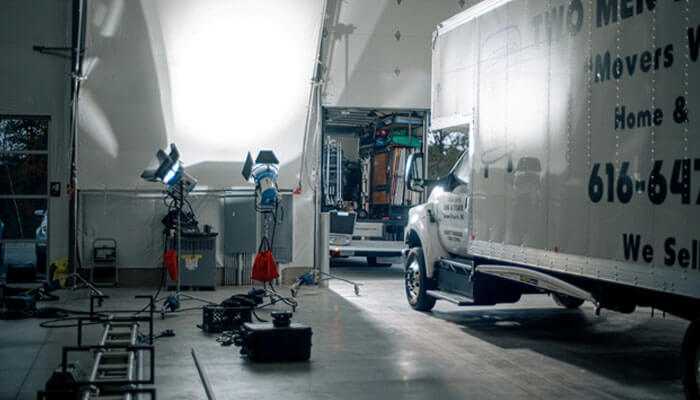An office relocation is much more than a mere change of address; it’s a pivotal moment that signifies growth, evolution, and new opportunities for a business. This journey, while exciting, is fraught with complexities and challenges that demand careful planning, coordination, and execution. A well-orchestrated move not only ensures the physical transfer of assets but also represents a strategic step towards enhancing operational efficiency, boosting employee morale, and reaffirming the company’s commitment to innovation and progress. In this comprehensive guide, we delve into the art and science of mastering office relocation.
We aim to equip you with a detailed roadmap and practical strategies to navigate the maze of tasks and decisions that lie ahead, ensuring your transition is as seamless and efficient as possible. From the initial planning stages to the moment you settle into your new space, each step is an integral piece of the puzzle, contributing to the ultimate goal of a successful move that sets the stage for the next chapter in your company’s story.
1. Early Planning: The Keystone of a Successful Office Move
The secret to a smooth office relocation is early and meticulous planning. Start by creating a detailed moving plan that outlines every task, from selecting your new office space to the day you officially reopen for business. This plan should include a timeline, budget, inventory of items to move, and specific responsibilities assigned to team members. Early planning prevents last-minute rushes and ensures that every aspect of the move is considered well in advance.
2. Choosing the Right Moving Company
Selecting a moving company experienced in commercial relocations is crucial. Professionals like Coleman Movers understand the unique needs of businesses, ensuring that your equipment and documents are handled with the utmost care. Research and select a company with a strong track record, reliable customer service, and the capability to handle the specific requirements of your office move. A dependable moving partner can be the difference between a chaotic move and a seamless transition.
3. Communicating with Your Team
Effective communication with your team is paramount during an office move. Keep everyone informed about the moving schedule, changes, and their roles in the process. Encourage feedback and suggestions to foster a sense of involvement and to alleviate any concerns. Regular updates can help maintain morale and ensure that your team is aligned with the moving plan, contributing to a more coordinated and efficient move.
4. IT and Infrastructure Planning
Relocating your IT infrastructure is one of the most sensitive aspects of moving an office. Plan the transfer of servers, computers, and telecommunications equipment with precision. Involve your IT department early in the process to manage data backups, system migrations, and setting up the new office’s IT infrastructure. Ensuring your technology transition is smooth is critical to resuming operations quickly and avoiding costly downtime.
5. Minimizing Downtime
Minimizing downtime is essential to maintain productivity during a move. Plan the move during off-peak hours or over a weekend to lessen the impact on your operations. Prepare your new office space in advance, setting up utilities, internet, and security systems before the move. Strategically scheduling and executing the relocation can significantly reduce downtime and help your business return to full operational capacity swiftly.
6. Legal and Regulatory Considerations
Navigating the legal and regulatory requirements is crucial in any office move. Ensure you’re aware of lease obligations for both your new and old space. Additionally, compliance with building codes, insurance requirements, and any industry-specific regulations is non-negotiable. Consulting with legal counsel can help avoid potential legal pitfalls, ensuring your move doesn’t come with unexpected complications.
7. Inventory Management and Decluttering
An office move presents a perfect opportunity to declutter and streamline your workspace. Conduct a thorough inventory and categorize items that need to be moved, stored, or disposed of. This process not only reduces moving costs but also contributes to a more organized and efficient office environment. Employing a systematic approach to inventory management ensures nothing essential is left behind or unnecessarily moved.
8. Employee Relocation Support
If your move affects employees’ commutes or requires staff to relocate, offering support is vital. Assistance can range from providing information on public transport options to offering relocation packages or remote work options. Supporting your team through this transition maintains morale and productivity, ensuring your business remains operational and resilient during the move.
9. Setting Up the New Space
Before moving day, plan the layout of your new office carefully. Consider the placement of furniture, equipment, and how teams will be situated to promote efficient workflows and collaboration. Engage an interior designer if necessary, to create a functional and motivating workspace. Ensuring your new office is set up for success from day one encourages a smooth transition and quick return to productivity.
10. Post-Move Adjustments and Feedback
After the move, be prepared for a period of adjustment as employees settle into the new space. Solicit feedback on the new layout and any areas of improvement. Be flexible and ready to make changes to optimize workflows, comfort, and efficiency. This iterative process ensures your new office fully supports your team’s needs and business objectives.
Conclusion
Mastering the art of office relocation involves detailed planning, clear communication, and the right partnerships. By following this comprehensive guide, businesses can ensure their office move is a catalyst for growth and renewal. From early planning stages through to post-move adjustments, each step is an opportunity to enhance your operational efficiency, employee satisfaction, and business resilience. Remember, a successful office move is not just about changing locations; it’s about setting your business up for success in a new space that meets your current needs and supports future growth. With careful preparation and a focus on minimizing downtime, your office relocation can be a smooth, efficient process that propels your company forward.




